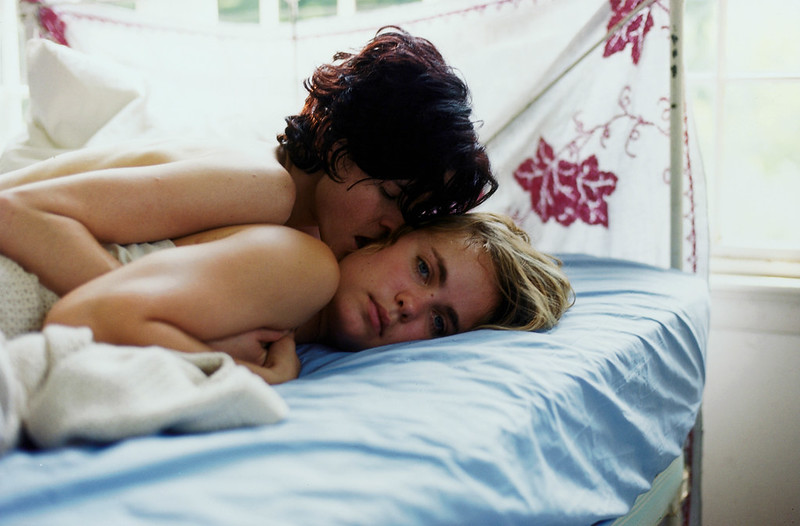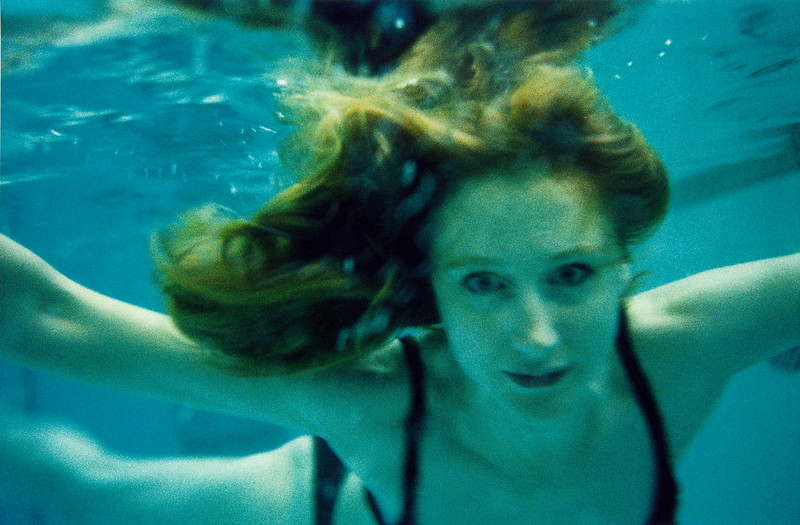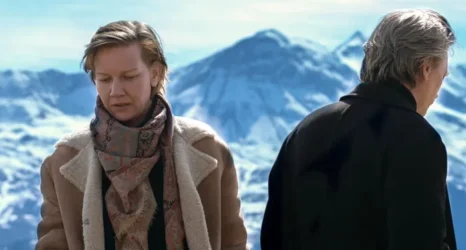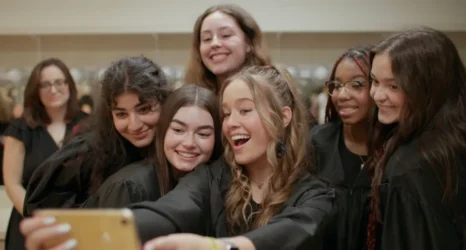
Twenty-two years later, High Art (1998)—director Lisa Cholodenko’s first feature film—resonates simultaneously as a timeless meditation on love, loss and art and as a trenchant drama with distinctive roots in 1990s aesthetics, culture and social issues.
During a recent retrospective screening and Q&A with its cast and crew as part of the 2020 Sundance Film Festival’s “From the Collection” programming, these intersecting appeals of the film—the timeless and the timely—rendered starkly why it remains a milestone for contemporary American independent film and for lesbian representation on the silver screen.
“It’s just a beautiful film outside of the harrowing subject matter of drugs,” Patricia Clarkson, who plays a vital supporting actress role, told Ms. prior to the screening. “It still stands. Every frame still stands.”
Young and unassuming Syd (Radha Mitchell), a newly appointed associate editor at a prominent photography magazine who’s living with her boyfriend when the film begins, stumbles into the orbit of disaffected former-superstar photographer Lucy Berliner (Ally Sheedy) when a leak in her ceiling brings Syd to the doorstep of Lucy’s upstairs apartment. This chance encounter leads to a deepening relationship between the two women, as Syd encourages to Lucy resume her photography practice and secures her a coveted cover feature in her magazine.
While exploring the possibility of a new start in love and art, Lucy begins to distance herself from longtime lover Greta (Clarkson), a German former actress, now drug-addled but still quite perceptive of her girlfriend’s straying heart.

Prior to the retrospective screening, Mitchell recounted how she, then a relatively young actress, took for granted the predominantly female crew of the film, not realizing how rare it was at the time—and still is.
She also reflected on the significant mentoring she received from director Cholodenko and costar Sheedy and the profound reactions of its viewers, both women and men.
Audiences “responded to [the film] in the best way that I could have expected,” Mitchell acknowledged. “Over the years, people have come up to me and said, ‘It was a really important film to me. It helped me navigate my own life story. It helped me figure out my sexuality.’ A lot of young women at the time identified with this story.”
Set against the backdrop of the 1990s opioid crisis, High Art artfully toes the line between the pyrrhic euphoria of drug use and the pain of addiction while playing into the decade’s flirtation with “heroin chic.”
“I have a love issue, and a drug problem,” Lucy tells her mother (Tammy Grimes) midway through the film, as she struggles to manage the competing lures of her addiction, her love life, and her art. “Or maybe I have a love problem, and a drug issue. I don’t know.”
But for all its tragic underpinnings, the unmistakable heart of the film is its central love story, remarkable for its rendering of the complexities of longing as well as its commitment to accurately representing same-sex female desire during an era in which LGBTQ representation was not commonplace.
When asked about her experience working as a female director in a male-dominated film industry, Cholodenko stressed that the industry has shifted significantly since her first film: “I think it was starting to open when I leaned in and made High Art. I was amazed that there was a space for a film like that.”
Similarly, representations of lesbian relationships and desire have proliferated in the last twenty years.
“I feel really hopeful right now,” Cholodenko affirmed, arguing for the importance of a diversity of representation. “Just that we’re represented is a good thing. I feel like it’s a good time. I’m optimistic.”
Certainly, contemporary LGBTQ films and television owe some of their current favor to the legacy of Cholodenko’s first feature.
A nuanced story that doesn’t shy away from its intellectual underpinnings, High Art offers a thoughtful portrayal of the power of art, a hopeful look at love’s transformative potential, and a tragic snapshot of the destructive force of addiction—all through the lens of an enduring love story that still rings true decades later.
You may also like:





